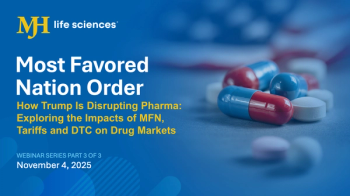
The Patient Comes First with Outcomes-Based Contracting
The benefits and challenges of outcomes-based contracting.
Outcomes-based contracting or OBC can best be described as “less is more.” It’s not about who can sell the most, but instead who can produce the most value with the best and most effective drugs that will ultimately improve patient health. This shift from volume to value has already begun with the growing trend of specialty treatments for smaller patient populations, such as autoimmune disorders and rare forms of cancer, where OBC makes for a particularly compelling argument. With an emphasis on these more focused groups of patients, experts believe that an average of 45 new drugs will launch per year from now through 2021. These drugs will address needs that are largely unmet in the market currently, and, given the high R&D, manufacturers will price the drugs accordingly.
Under OBC, the patient receives the best possible treatment with a chance to try drugs that fit their specific case. While patients benefit from increased access to appropriate treatments, manufacturers and payers can also gain from this new model of paying based on outcomes. OBC allows manufacturers to enjoy a more predictable investment while, at the same time, payers minimize their financial risk. Not to mention, manufacturers’ products appear on more formularies. Yes, the ultimate price is more, but the relative increase in value is far more significant.
Traversing the challenges
While a good idea, OBCs also have some challenges, including:
â Relationships matter: While the ultimate goal of all participants in the healthcare industry is improving patient health, there can be a lack of trust among manufacturers, payers, and providers. In order for OBC to be successful, each of these parties has to set aside their concerns, achieve a high degree of collaboration, and change their business processes, which is not always easy. Mutual trust must exist amongst all three parties.
â Making the cut: Not all drugs are a good fit for OBC. Before a drug can be deemed a candidate for OBC, manufacturers and payers must first agree if a drug is an appropriate match. A key factor is if the drug’s success can be reliably measured, for example, through metrics, such as reduction in hospital readmissions.
â Finding reality: Each patient is unique, making it difficult to predict a drug’s success based solely on clinical trials, which are highly controlled and not always indicative of a larger demographic in the real world.
â To believe or not to believe: Manufacturers must convince payers that the controlled clinical trial results will be similar to those in the real world. This is difficult given the level of distrust between these two groups.
â Tricky tracking: With today’s strict privacy rules, getting access to electronic health records is very difficult, leaving players with little more than their own claims and data to measure a drug’s success.
Despite the challenges, OBCs are a potentially life-changing way of treating patients. With lives on the line, it becomes even more paramount that payers and manufacturers have the appropriate systems and processes in place to effectively manage the evaluation period, measure the outcome experienced by patients, and manage the processing of the contract terms. This can all be done using cloud software that can intelligently identify transactions subject to OBC and be configured, based on contract terms, to automatically apply discounts or additional processing. This enables payers and providers to confidently exchange information and agree upon the overall outcome. In the end, it’s about working together to give patients a level of care that might not otherwise be possible, as well as ultimately proving that the potential of OBCs far outweighs the challenges.
Nate Taninecz isVice President, Life Sciences Industry at Model N
Newsletter
Lead with insight with the Pharmaceutical Executive newsletter, featuring strategic analysis, leadership trends, and market intelligence for biopharma decision-makers.





